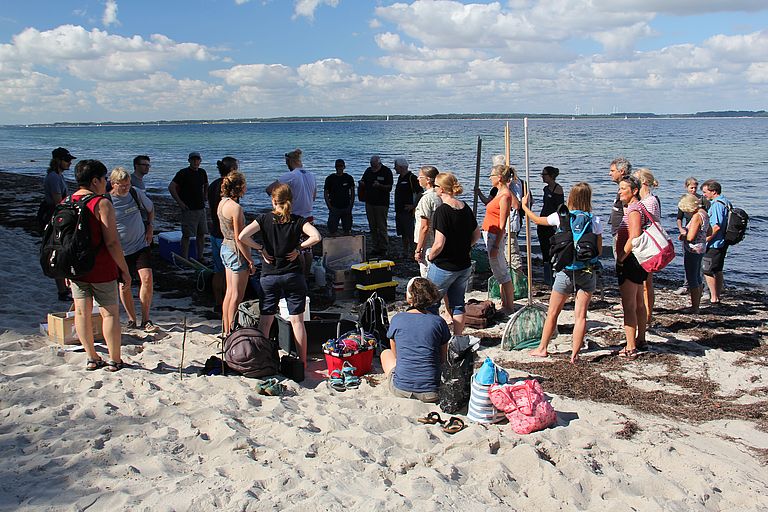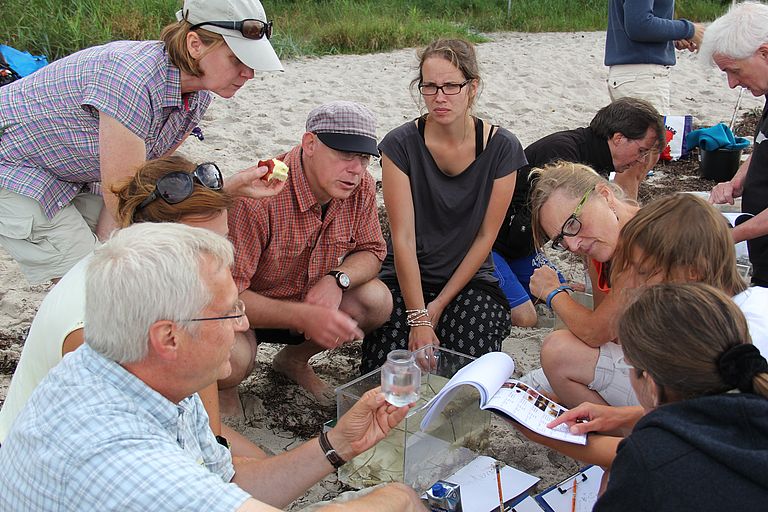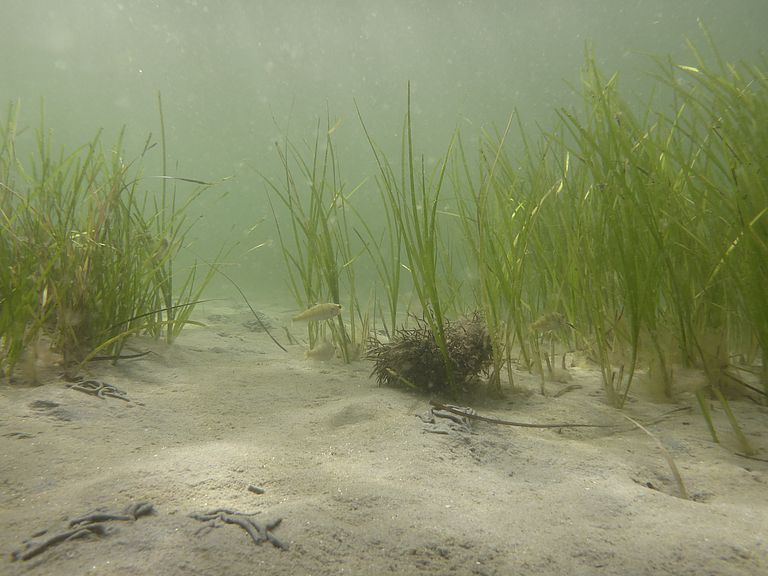Bringing Science to the Classroom
Biodiversity of coastal systems workshop for highschool teachers
Biodiversity is a word with positive connotations for many people, even if they may not be able to exactly define why. During this workshop, 25 teacher from different schools across Schleswig-Holstein participated in a training event at Schloss Noer on Eckernfoerde fjord. Here, scientists from the EU BONUS project BIO-C3 and the Helmholtz Centre for Ocean Research Kiel informed about the topic “Biodiversity in the Baltic realm – function, services, and anthropogenic threats”. “As biology teacher I do of course know quite a bit about the fauna and ecological connections on land. But this is not true at all for the underwater systems even a few meters from the beach”, said Heidi Mergemann, biology teacher from the high-school Probstei in Schoenberg.
During the training event, the organizer answered this and many other questions, and brought the marine systems into focus. “Knowing which species are present is a first step, but genetic and functional diversity is also of large importance for ecosystems, and a main focus in our BONUS BIO-C3 project”, stressed Dr. Jan Dierking, scientific coordinator of BIO-C3. “Moreover, environmental changes, overfishing or species invasions increasingly affect Baltic and global ecosystems and require species to adapt, and lead to changes ecosystem structure and functioning.”
In order to pass on this knowledge not just via scientific presentations, the training workshop included a strong hands-on aspect, with a half day excursion into the coastal habitats of Eckernfoerde Fjord. Here, the teachers sampled eelgrass meadows, sediment bottoms, and the macroalgae zone with different methods, compiled species lists, and discussed foodwebs and anthropenic impacts in these systems: for example, in which state are the local eelgrass meadows? Are leafs strongly overgrown by algae, which could point to an overabundance of nutrients (“eutrophication”) in the water? And how abundant are grazers such as snails on the leafs, which are partly regulated by the abundance of fish predators through the foodchain?
„This is the opposite of dry classroom work”, smiled Katja Bolte from the Helene-Lange-Gymnasium in Rendsburg while chasing some small fish with a push net in hip-high water. “I will definitely try something similar with my class during the next project days at my school.” The workshop approach, from taxonomic knowledge to understanding of functions and evolutionary adaptations, to threats and services, found a lot of acclaim. “In order to show students that biodiversity, ecology, genetics and evolution are not isolated fields but all interconnected, we need topics and examples that show the connections in an easy to grasp way”, explains Olav Binder from the Klaus-Harms-Schule Kappeln.
Through collaborations of project scientists and the school program at GEOMAR, a number of workshops on different marine topics has been realized over the past years, in order to create a foundation for the transfer of scientific knowledge to the classroom. Heidi Mergemann enthusiastically supports this concept: “As teacher, I take away a range of concrete ideas on tackling new topics with my class from this workshop, and maybe even some small projects to pursue together with GEOMAR and BIO-C3. Besides, plain and simply, I also had a great time!”.
BIO-C3 in brief:
13 partner institutes from eight European countries cooperate in the BIO-C3 project (Biodiversity Changes – Causes, Consequences and Management Implications) to address the importance of marine biodiversity and how it might be threatened in the Baltic by climate change. The project that runs from January 2014 to July 2017, is funded by the European Union as part of the BONUS - Science for a Better Future of the Baltic Sea Region - programme and the German Ministry of Education and Research with a total of 4 million Euros. It is coordinated at GEOMAR Helmholtz Centre for Ocean Research Kiel, Germany, assisted by DTU Aqua, National Institute of Aquatic Resources, Technical University of Denmark.





